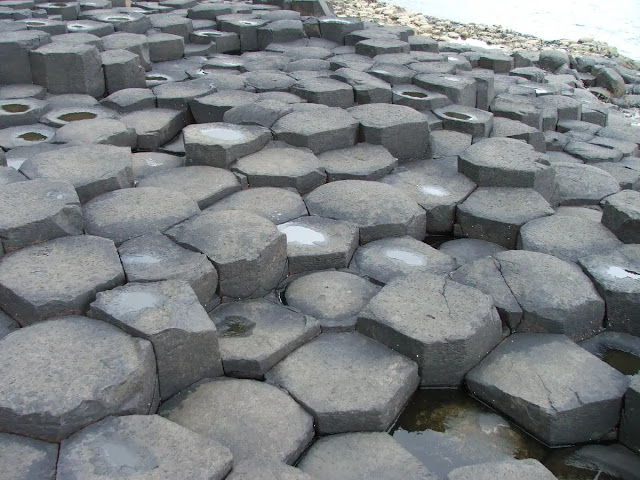Ringing Rocks: Sonorous Rocks, Musical Rocks
Ringing rocks, also known as sonorous or lithophonic rocks, are a fascinating geological phenomenon where specific rocks resonate with a bell-like sound when struck. These seemingly ordinary rocks hold a hidden musicality, captivating scientists and music enthusiasts alike.
Although scientists don’t have a definitive answer as to why the rocks ring, they do have a name for ringing rocks. They are called with sonorous rocks or lithophonic rocks. These are the terms that are given to rocks that resonate with a bell-like sound when they are struck.
Sonorous rocks are rocks that resonate like a bell when struck. These chime-like sounds come from geological phenomena known as ringing rocks. Physically, they look no different from regular rocks, but it’s not until you lightly strike them with a hammer that the rocks reveal their sonic secret.
Stones do not usually ring, but when these particular stones are struck lightly with a hammer, they will vibrate and make a sound not unlike that of a bell. Why they do this is still a mystery to science. The rocks themselves are composed of diabase, the same type of rock that makes up most the earth's crust. Another part of the mystery is while all the rocks seem to be made of the same material (mostly iron and hard minerals) only one-third of them generate the ringing sound when hit. Rocks that ring are known as "live" rocks, and those that don't are referred to as "dead" rocks.
Sonorous Rocks Geology
Composition: The key lies in the rock's composition and structure. Ringing rocks are typically fine-grained, silica-rich rocks like quartzite, rhyolite, or basalt. These materials have a dense, homogeneous structure with minimal internal flaws, allowing sound waves to travel efficiently.
Resonance and Frequency: When struck, the rock vibrates at its natural resonant frequencies, producing a clear, ringing tone. The specific pitch depends on the rock's size, shape, and composition.
What makes them sound like bells?
There has been a great deal of controversy concerning the ringing ability of the boulders; conversely, there has been an almost complete lack of testing to support the conjectures. Conditions such as size and shape of the boulders and the way that the boulders are supported or stacked certainly influence the sounds that the boulders make but do not in themselves impart the ringing ability.
Although the sound is often described as metallic, it is most likely due to a combination of the density of the rock and a high degree of internal stress. The sound can be duplicated on a small scale by tapping the handle of a ceramic coffee cup.
The iron content of the diabase is often identified as the source of the ringing ability. Actual chemical analysis of the Coffman Hill diabase shows that iron content (as ferric oxide) of the rock ranges from 9% and 12%. Although comparatively high for an average igneous rock (3% is typical for granite), it is within the normal range for a basalt. This point suggests that the iron content is not a primary factor in the ringing ability.
So far, there has been only one published scientific experiment on the source of the ringing ability. In the 1960s, a Rutgers University professor did an informal experiment where specimens of "live" and "dead" ringing rock boulders from the Bucks County park site were sawed into thin slices and then measured for changes in shape. The rock slices were measured with delicate foil strain gauges, which could measure minute changes in size.
A more plausible theory is that the elastic stresses remained in the rock when the boulder fields formed, and the slow weathering rate keeps the stresses from dissipating. A possible source of the stresses would likely be the loading stresses from the time when the rock crystallized. The diabase sill formed at roughly 1.2–1.9 miles (2–3 km) beneath the surface.
This "relict stress" theory implies that the ringing rock boulders act much like a guitar string. When a guitar string is limp it does not resonate, but a plucked string will provide a range of sounds depending on the level of applied tension.
Where are Ringing Rocks found?
Occurrence and Distribution of the Ringing Rocks
Ringing rocks, also known as sonorous or lithophonic rocks, can be found in various locations worldwide, often in clusters within specific geological formations. Here are some of the most famous examples:
United States
- Ringing Rocks County Park, Pennsylvania: This park is home to a large field of ringing rocks, primarily composed of diabase, a type of volcanic rock. The rocks here produce a variety of tones depending on their size and composition.
- Musical Stones of Ringtones, California: This site features a collection of ringing rocks made of rhyolite, a volcanic rock with a glassy texture. The rocks here are known for their particularly clear and resonant tones.
- Musical Stones of Chilmark, Massachusetts: These quartzite rocks are known for their clear, high-pitched tones when struck.
Canada
Hopewell Rocks, New Brunswick: These massive sandstone formations produce booming, gong-like sounds when struck. The rocks are also known for their interesting shapes and carvings.
China
Yungang Grottoes, Shanxi Province: These ancient Buddhist cave temples feature several ringing stones that were incorporated into the architecture and used to create unique soundscapes.
Australia
Musical Stones of Glen Innes: This site features a collection of ringing rocks made of granite and rhyolite. The rocks here are known for their wide range of tones and have been used in musical performances.
Can I visit the Ringing Rocks?
Yes, Ringing Rocks County Park in Pennsylvania is a public park open for visitors. However, it's important to check their website or contact them for specific information on visiting hours, regulations regarding hammering the rocks, and any safety guidelines.




%20(1).webp)




